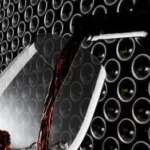Indice
Con la caduta dell’Impero Romano nel 376 D.C. la produzione del vino subì un forte rallentamento, ufficialmente, si verificò un blocco dell’economia se non un forte rallentamento, in primis le vie di comunicazione divennero non utilizzabili per diverse ragioni, e divenne un periodo molto deleterio per la pianta della vite e del vino, per fortuna la chiesa che per motivi spirituali ed ecclesiastici continuò a coltivare la vite, per produrre il vino che veniva usato durante le cerimonie religiose.
Il tardo Impero e il vino germanico
Il tardo Impero consegna al Medioevo una serie di latifondi coltivati da schiavi, essendo l’economia romana impostata sullo sfruttamento della schiavitù, poi il crollo dello Stato romano avvantaggia la Chiesa nelle proprietà delle viti e i nobili germanici che si sostituirono ai romani e le viti ripresero ad essere coltivate sia da uomini liberi che da schiavi.
L’unica zona che mantenne una buona produzione di vino fu la zona della Mosella e la zona del fiume Reno che arrivava fino a Coblenza, nella zona mediterranea e in Spagna la vite fu vietata dai Musulmani che vietavano l’uso di bevande alcoliche per motivi religiosi, altro colpo decisivo alla coltura della vite fu data con la caduta di Costantinopoli ad opera dei Turchi 1453 D.C.. La vite non fu più considerata una pianta fondamentale come ai tempi di Roma, dove la cultura del vino si era ormai diffusa a tutte le classi sociali, anche gli schiavi ne facevano un uso abbondante.
I Barbari
I popoli barbarici stanziati in Gallia e in Spagna ( Urgundi, Svevi, Visigoti e Vandali) sfruttando la manodopera dei sottomessi e continuarono la coltivazione della vite. Flavius Magnus Aurelius Senator (che poi assunse il nome di Cassiodoro) che era un Ministro del re Goto chiedeva alla corte di Ravenna Bizantina di procurargli un vino passito Acinaticium dato che l’avevano esaurito.
La Chiesa e il suo rapporto con il vino
Per quanto concerne la Chiesa, essa ne ammetteva l’uso di questa bevanda purché venisse consumata con parsimonia e sobrietà, perché era considerata afrodisiaca e stimolante di passioni se bevuta in modo eccessivo. Anche il famoso monaco San Benedetto da Norcia parla del vino, e ne ammetteva l’uso nel suo monastero imponendo regole precise e la quantità da consumare.
I Carolingi e il vino
Con l’epoca Carolingia la coltivazione della vite torna ad essere di nuovo ripresa in modo massiccio. Grazie anche alla stabilità politica imposta da dall’Imperatore Carlo Magno, possiamo affermare che dal secolo IX fino al XI secolo la viticoltura riprese vigore e nei monasteri si crearono dei piccoli commerci di vino, rivitalizzando il valore economico del vino.
Diciamo che nel Medioevo la Chiesa fu custode della vite e della produzione del vino e che i conventi furono adibiti ad piccole aziende agricole. Le istituzioni religiose avevano molti ettari di terreno che adibivano alla coltura della vite, anche se non era proprio un’impostazione prettamente economica, ma rappresentava una forma di sostentamento da parte dei conventi.
Durante il periodo medioevale i vini si caratterizzavano per la scarsa alcolicità. Strade non agibili ed i contenitori inidonei facevano il resto, cioè rendevano il vino imbevibile. Nel Medioevo si ha un grande arretramento delle tecniche di vinificazione. I vini non venivano più invecchiati bensì bevuti subito e quelli che risultavano troppo acidi ed astringenti subivano il trattamento con il miele e spezie.
I vini Italiani e medioevo
In Italia i vini che si diffusero nella parte Centrosettentrionale furono il Trebbiano della Toscana e delle Marche, la Vernaccia ligure e la schiava della Valle del Po che rendevano i vini Italiani già quella volta i più nobili.
Nel XIV secolo si verificò una glaciazione ,che fece notevolissimi danni ai raccolti. La carestia e la peste completarono l’opera di distruzione della vite ed un’ ulteriore decadimento della viticoltura.
Scoperta dell’America e le malattie della vite
 La scoperta dell’America nel 1492 provocò un ulteriore danno alla vite. Da questo nuovo continente giunsero l’Oidio, la Peronospora, la filossera, questi tre flagelli fecero enormi danni. La viticoltura francese subì grandissimi danni, per combattere l’Oidio si adoperò lo zolfo, per la Peronospora si usò rame e calce, invece per la Filossera si decise d’innestare su radici Americane resistenti all’afide, centrando lo scopo di rendere l’intera pianta forte.
La scoperta dell’America nel 1492 provocò un ulteriore danno alla vite. Da questo nuovo continente giunsero l’Oidio, la Peronospora, la filossera, questi tre flagelli fecero enormi danni. La viticoltura francese subì grandissimi danni, per combattere l’Oidio si adoperò lo zolfo, per la Peronospora si usò rame e calce, invece per la Filossera si decise d’innestare su radici Americane resistenti all’afide, centrando lo scopo di rendere l’intera pianta forte.
Le prime bottiglie di vino
Verso la fine del XVII secolo vennero adoperate le prime bottiglie in vetro per la conservazione ed il trasporto del vino (fino ad allora le bottiglie venivano usate come caraffe). Unitamente all’invenzione od all’uso del tappo dal sughero sempre in questa epoca nacque un nuovo tipo di vino (champagne). Fu eliminata l’esclusiva delle botti e il trasporto era molto più facilitato attraverso l’ introduzione delle bottiglie di vino.





